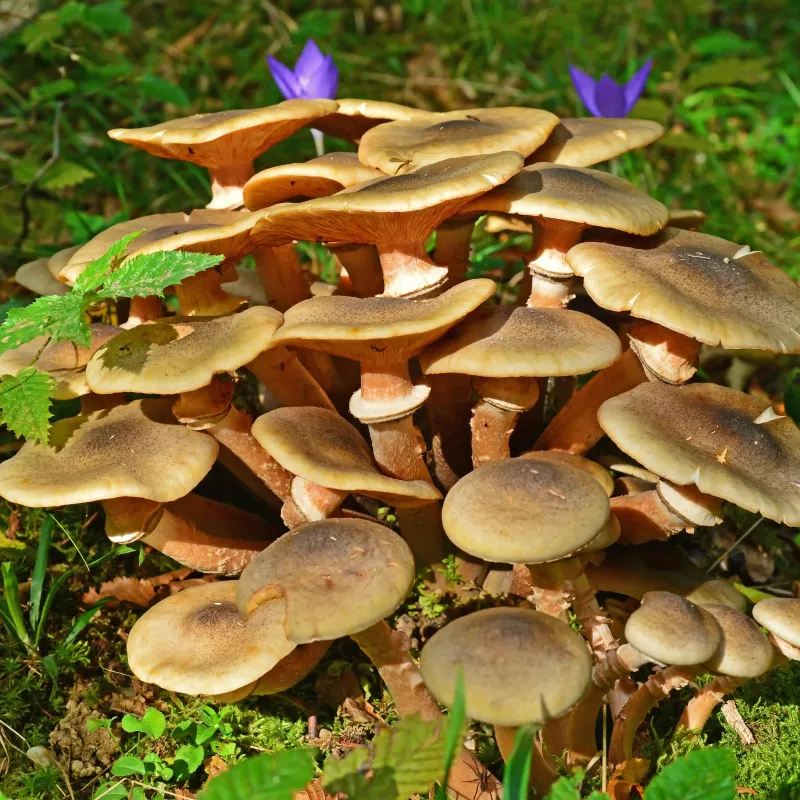
About
Armillaria mellea, commonly known as the Honey Fungus, is a parasitic and saprophytic mushroom found in forests across Europe, Asia, and North America. While it is edible when properly prepared, it is best known for its ecological impact—being one of the most aggressive tree pathogens and among the largest living organisms on Earth. Its golden-brown cap and clustered growth habit make it easily recognizable in the wild.
History
Honey Fungus has been used as food in Eastern Europe for centuries, often boiled thoroughly before consumption to eliminate toxins. In contrast, it has drawn concern among foresters and ecologists due to its ability to kill large numbers of trees and shrubs via root infection.
Some of the largest known fungal colonies on Earth are Armillaria species, including one in Oregon spanning over 3.5 square miles. Despite its destructive potential, it plays a vital role in woodland ecosystems by recycling nutrients through decay.
Overview
The fruiting bodies grow in dense clusters around the base of dead or living hardwood and conifer trees. Caps are honey-colored to brown, often with dark scales, and range from 5–15 cm in diameter. Gills are white to cream and attached, and the stem has a noticeable ring (annulus).
Edible only after thorough cooking (usually boiling and discarding the water), Honey Fungus has a firm texture and mild, earthy flavor. It contains some toxic compounds when raw or undercooked. It is rich in fiber, protein, and antioxidants, but caution is required with identification, as it can be confused with toxic lookalikes.
Flavors
Mild
Mild and sweet when cooked
Sweet
This mushroom boasts a nutty flavor that pairs well with a variety of dishes.
Textures
Firm
Firm texture when cooked
Fragrances
Earthy
Has a mild, earthy smell
Physical Characteristics
Caps:
Yellow-brown to honey; convex, becoming flat with age
Gills:
White to cream; attached to the stem
Mushroom Ratings
0.0
Based on 0 Reviews
5
★4
★3
★2
★1
★Share your thoughts
If you've consumed this mushroom, share your thoughts with our community
References
Research Status and Application Prospects of the Medicinal Mushroom Armillaria mellea
Use of the Endophytic Fungus Daldinia cf. concentrica and Its Volatiles as Bio-Control Agents
This research article discusses the nutritional and medicinal properties of Armillaria mellea.
2022
Endophytic fungi are organisms that spend most of their life cycle within plant tissues without causing any visible damage to the host plant. Many endophytes were found to secrete specialized metabolites and/or emit volatile organic compounds (VOCs), which may be biologically active and assist fungal survival inside the plant as well as benefit their hosts.
2016